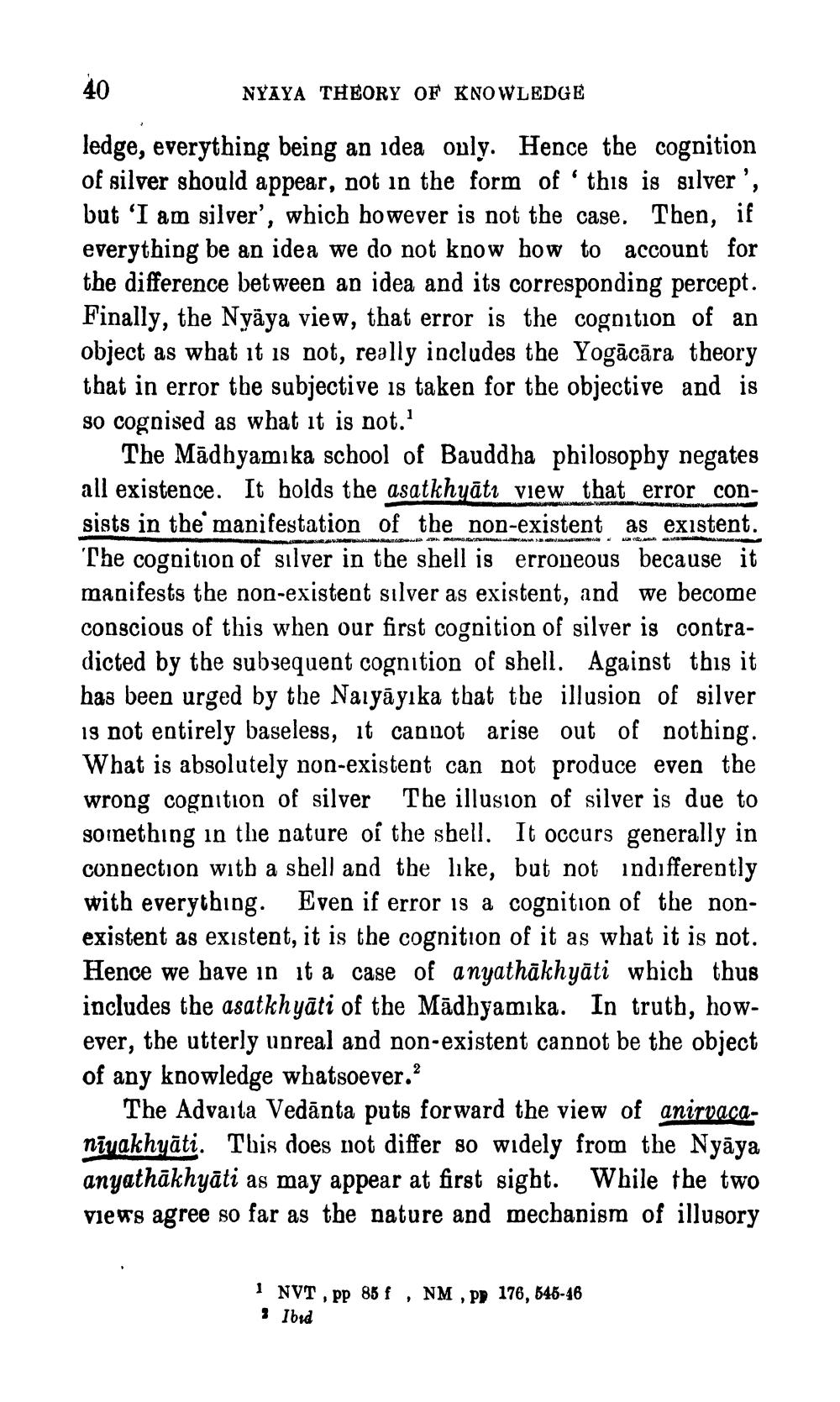________________
NYAYA THEORY OF KNOWLEDGE
ledge, everything being an idea only. Hence the cognition of silver should appear, not in the form of 'this is silver', but 'I am silver', which however is not the case. Then, if everything be an idea we do not know how to account for the difference between an idea and its corresponding percept. Finally, the Nyäya view, that error is the cognition of an object as what it is not, really includes the Yogācāra theory that in error the subjective is taken for the objective and is so cognised as what it is not.'
The Mādhyamika school of Bauddha philosopby negates all existence. It holds the asatkhyātr view that error consists in the manifestation of the non-existent as existent. The cognition of silver in the shell is erroneous because it manifests the non-existent silver as existent, and we become conscious of this when our first cognition of silver is contradicted by the subsequent cognition of shell. Against this it has been urged by the Naiyāyıka that the illusion of silver 19 not entirely baseless, it cannot arise out of nothing. What is absolutely non-existent can not produce even the wrong cognition of silver The illusion of silver is due to something in the nature of the shell. It occurs generally in connection with a shell and the like, but not indifferently with everything. Even if error is a cognition of the nonexistent as existent, it is the cognition of it as what it is not. Hence we have in it a case of anyathākhyāti which thus includes the asatkhyāti of the Mādhyamika. In truth, however, the utterly unreal and non-existent cannot be the object of any knowledge whatsoever.
The Advaita Vedānta puts forward the view of anirvacaniyakhyāti. This does not differ so widely from the Nyāya anyathākhyāti as may appear at first sight. While the two views agree so far as the nature and mechanism of illusory
1 NVT, pp 85 f , NM, pp 176, B45-46 ; Ibid




